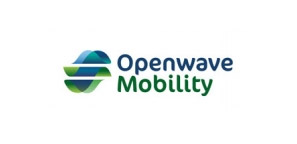Carriers have been utilising multiple silos to store subscriber data for years. That’s starting to lose its curb appeal. Why? That’s because in today’s fast-paced, ultra-competitive marketplace agility is more important than ever; the ability to be first among competitors, and to rapidly change direction, multiple times, is crucial.
Now with the introduction of new services such as VoWiFi, IoT and M2M, carriers need to have access faster than ever access to monetize data. However, that’s not going to happen as long as operators have multiple Subscriber Data Management (SDM) solutions using disparate technologies.
But how do operators solve the problem of unifying numerous existing silos with scattered data in order to have a single, integrated view? A hybrid approach employing data consolidation, data federation and data mediation would give network providers a clear view of all that spread-out data while also giving them the agility needed to add new services.
Data consolidation
Consolidating data into a single repository offers three clear advantages. The first benefit is reduced operational costs. Maintaining multiple repositories that use different technologies can cost a pretty penny. The second reason, which is packed with the most potential, is agility. The ability to quickly launch a new, innovative service when others can’t could easily allow one operator to leapfrog the rest. Thirdly, consolidation allows operators to capture a better understanding of subscribers’ behavior. A single repository can utilize analytics to learn the value of different services and leverage that insight to monetise subscriber data more efficiently. However, complete consolidation is disruptive and can involve risk, hence this is often regarded as the long term solution.
Data federation
The data federation (sometimes referred to as data virtualisation) entity is the workhorse of an SDM strategy. It should be able to perform many essential duties that complement the capabilities of the data consolidation solution and access different types of database servers and files with various formats. In addition, it needs to be able to integrate information from all different types of sources and have the ability to analyse that data.
The federation solution should allow applications and tools direct access to subscriber data via various APIs and languages. And the operator would not need to alter the data repositories in any way. This minimises downtime, reduces risk and gives operators the assurance to launch new services. Leveraging existing information in the repositories and then enhancing that with additional data, supplies operators with needed agility.
Data mediation
Network operators tend to shy away from transitioning to a single consolidated repository because they fear that they will disrupt the performance and reliability of the existing front-end applications. In the hybrid approach, interoperability is a requirement for front-end applications in order to ensure a functional unified subscriber repository. A network that supports a multi-vendor capable front-end will also help to increase agility, which will be necessary to adapt to new and emerging technologies.
Data mediation enables the operator to transition to a unified repository by separating the application. The greatest advantage of this is the ability to utilize the duplication of data in the repositories to load balance. The requests can be across various sources and provide real-time applications with prioritised access.
The pressing need for a single view
The need for an integrated single view of subscriber data without disruption remains paramount. It drives a need for a hybrid approach that can optimise SDM. As network agility becomes more and more important, so too will be the importance of agile. Successful SDM solutions will give operators the insight they need to provide the best user experience while also being able to efficiently maximise the monetization of new services.
By Matt Halligan, Chief Technology Officer
 Matt Halligan, CTO and VP of Engineering with Openwave Technologies, has over 17 years of experience in the telecommunications industry and has held a range of technical and has held a range of technical and management roles within Research & Development. Prior to his role of Vice-President of Engineering at Openwave Mobility, Matt was Vice-President for Engineering within Openwave Systems, responsible for all R&D functions for the mobile business and the management of 180 engineers across the globe and site management of the Belfast facility. Before joining Openwave Systems in 2002, Matt spent 7 years at Nortel and was the Chief Software Architect for Nortel’s NITEC R&D facility, with responsibility for SDH optical networks software solutions. Matt graduated with first class BEng honors degree.
Matt Halligan, CTO and VP of Engineering with Openwave Technologies, has over 17 years of experience in the telecommunications industry and has held a range of technical and has held a range of technical and management roles within Research & Development. Prior to his role of Vice-President of Engineering at Openwave Mobility, Matt was Vice-President for Engineering within Openwave Systems, responsible for all R&D functions for the mobile business and the management of 180 engineers across the globe and site management of the Belfast facility. Before joining Openwave Systems in 2002, Matt spent 7 years at Nortel and was the Chief Software Architect for Nortel’s NITEC R&D facility, with responsibility for SDH optical networks software solutions. Matt graduated with first class BEng honors degree.










